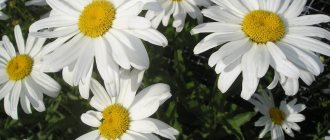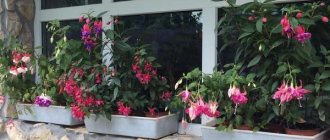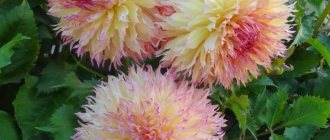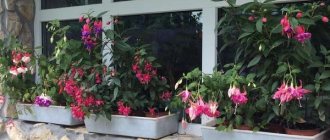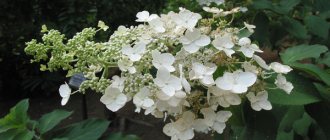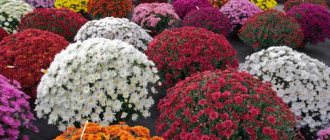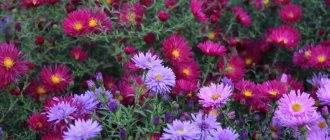Yarrow gets part of its name from the Greek mythology hero Achilles. The other part of the name literally translates as “thousand leaves” and is essentially a botanical description of the plant. This is a simple flower that does not require special attention and care. Residents of the Northern Hemisphere have long liked it. From fields, from forests, from roadways, yarrow found its way into gardens due to its medicinal properties and discreet, discreet beauty.
Today, Achillea is not just a grass, as it was a thousand years ago. About 200 species of flowers have spread throughout the world and have earned the respect and love of gardeners, herbalists, and landscape designers. Terry, felt, erect bushes of modern hybrids are decorated with red, yellow, pink, pearl inflorescences of all pastel shades. The variety of decorative yarrow varieties is great and worth understanding.
Description of the plant
Yarrow (Achillea) is a genus of perennials in the Asteraceae family. Described and classified by Carl Linnaeus in 1753, its reputation dates back to ancient times. The Latin name of the botanical genus Yarrow refers to the famous Trojan War hero Achilles, who healed numerous wounds with this herb.
It is also a major source of herbal raw material, used for thousands of years to this day, and a subject of interest to breeders creating new, variegated varieties.
Botanical characteristics:
- The stem is quite rigid, pubescent, forked, reaching 50-80 cm.
- Flowers. Most local species and varieties of yarrow are distinguished by white flowers, collected in the form of baskets in large corymbose inflorescences. Their inner part is formed by tubular bisexual flowers, along the perimeter there are reed female flowers, pollinated by insects.
- Leaves – narrow and long, dark green, pinnately dissected, reminiscent of green, slightly pubescent feathers, similar to fern leaves.
- The fruit is an elongated, gray achene.
The flowering period of yarrow is from June to the end of summer. The plant decorates the garden almost all summer, although there may be a break in flowering. The bush emits a rather intense, sweetish smell, reminiscent of a chrysanthemum.
Decorative yarrow also has important environmental significance. Many birds use its shoots to create nests, which prevents the appearance of pests in the garden, and the inflorescences and leaves are valuable food for butterflies, beetles, and some wasps. Plants attract different types of insects with their nectar. In agriculture, the species is used to combat soil erosion caused by drought.
Yarrow is sometimes considered a weed. However, it should be grown on your own plot and considered as a full-fledged species. It has decorative and health benefits. Proper placement in the garden can bring aesthetic qualities.
Properties of yarrow: harm and benefit
Useful properties of yarrow
The fact that yarrow has medicinal properties has been known for a very long time. Therefore, this plant has been used in alternative medicine for many centuries. Yarrow contains tannins, tannins, which have anti-inflammatory, strengthening, antibacterial and sedative effects. Such substances tone the skin and eliminate irritation; therefore, they are recommended for use on porous and acne-prone skin, sweating, oily seborrhea of the face, and also as a hair strengthening agent. Yarrow also contains vitamin K, which helps increase the strength of capillaries, stops hemorrhages and bleeding, and also heals wounds and ulcers. Due to the fact that this medicinal herb contains carotene, it helps eliminate brittle hair and nails, as well as flaking, dryness and keratinization of the skin, and prevents the appearance of acne and wrinkles.
This herb also contains essential oils, alkaloids, phytoncides, flavonoids, glycosides, bitterness, vitamin C, esters, choline, acetic, isovaleric and formic acids. Therefore, it helps stimulate appetite and liver function, increase bile secretion, accelerate the absorption of substances, and improve digestion. It is used for diarrhea, dysentery, varicose veins, hemorrhoids, thrombosis and any bleeding as a hemostatic agent, and for gastritis and enteritis - as an anti-inflammatory. Preparations made from yarrow are used for colds and fever as a diaphoretic. This plant can help with various diseases, for example: it treats pulmonary tuberculosis, catarrh and stomach ulcers, kidney stones, malaria, female diseases, enuresis, anemia, headaches, hypertension.
Various medicinal preparations can be made from yarrow, for example: infusion, ointment, liquid extract, juice, decoction and oil. Some of these products can be made with your own hands, while the rest are sold in pharmacies.
Recipes
- Decoction . 1 tbsp. Just boiled water should be combined with 1 small spoon of crushed herbs from such a plant. Boil the mixture over low heat for 5 to 10 minutes. The cooled broth must be strained. You should drink ½ tbsp. three times a day for stomach ulcers and gastritis.
- Tincture . Pour 30 grams of dried yarrow herb into a vessel made of dark glass, and then pour 100 milligrams of medical alcohol into it. The tightly sealed vessel is placed in a cool and dark place. The infusion will be ready after 10 days. Alcohol can be replaced with vodka, but in this case the product will be ready after 12 days. For bleeding and painful sensations, the drug is taken orally, 30–40 drops, which must first be combined with 50 milligrams of water. This product is suitable for treating wounds, as well as for making compresses.
- Ointment . Take a handful of fresh yarrow flowers and foliage. They must be ground well in a mortar and combined with rendered unsalted lard in a 1:1 ratio. This remedy is used for bruises.
Contraindications
Products made from yarrow are prohibited from use in cases of increased blood clotting and diseases associated with this condition. The juice of this plant should not be used during pregnancy. If you have absolutely no contraindications, then you should remember that if such drugs are used for a long time, this can cause poisoning: a rash appears on the skin surface, and you also feel dizzy.
Types and varieties
The genus includes, according to various sources, 85 or 150 species of perennial herbaceous plants, growing mainly in Europe, northern and western Asia, several species originate from North America.
The most common types:
- T. ordinary (A. millefolium) - the most common.
- T. ptarmica or sneezeweed, sneezeweed (A. ptarmica) - the plant causes sneezing (ptarmicum from Latin is translated as “sneezing agent”).
- T. Pannonica (A. pannonica) - used as animal feed.
- T. tomentosa (A.tomentosa) - with beautiful yellow flowers.
- T. meadowsweet (A. filipendula).
- T. club-shaped (A.clavinae).
- T. naked (A. Glaberrima).
- T. musk (A. moschata).
- T. noble (A. nobilis).
- T. willow (A. salicifolia).
More than a dozen species are found in the Russian flora. The most famous representative of the genus, common perennial yarrow (A. millefolium), is widespread in our country everywhere - in the Middle Zone, Siberia and the Urals, the Far East, and the southern regions. The genus name millefolium translates as “thousand leaves.” The flower grows in meadows, fields, and city lawns. Considered a weed. However, it is a rather attractive perennial plant that can brighten up a garden if planted properly.
Photo. Yarrow
In gardens you can also find dwarf felt yarrow (Achillea tomentosa), 10-30 cm high with yellow flowers (blooms in May-June), with shoots and leaves covered with soft down.
Photo. Tomentose yarrow (Achillea tomentosa)
Interesting plants with yellow flowers collected in inflorescences - tall meadowsweet yarrows, reaching 1-2 meters, bloom in June-July.
Photo. Meadowsweet yarrow (Achillea filipendula)
Yarrow, a charming but rather common flower, has inspired breeders to create more decorative varieties. Some of them, thanks to their interesting colors, look very elegant and can become the main decoration of a flower bed. There are various varieties of perennials, differing in the color of the inflorescence. It can be: pink, yellow, orange, red, cream. These individual colors can have different shades. Beautiful, expressive-colored plants are also represented by interspecific hybrids.
Most decorative varieties are obtained from the resilient and unpretentious yarrow. As some gardeners say, this type of yarrow turned out to be the most domesticated. Below is a list of yarrow varieties recommended for growing in gardens.
For lovers of decorative varieties we can recommend:
- “Pearl mussel” or “Pearl” is a variety of yarrow ptarmika, which is especially popular, unpretentious, with small, white double flowers. Height 40-80 cm, flowering: June-September.
Photo. T. Ptarmika “Pearl mussel”
- “Paprika” is a variety up to 80 cm high, with bright red reed flowers and yellow tubular flowers, blooms all summer.
- "Kirchkoenigin" Kirchkoenigin - dark red flowers with a light center, blooms all summer and September.
- "Terracotta" Terracotta - multi-colored flowers, in shades of orange, yellow and red, up to 60 cm high.
- "Tricolor" Tricolor - yellow-orange flowers with a thin red-pink border, blooms until September.
- “Red Velvet” Red Velvet is a variety with dark red flowers that blooms until October.
- "Purpurglut" Purpurglut - flowers of intense dark pink color, blooms until September.
- “Credo” Credo – cream color.
- “Cherry Queen” Cerise Queen - the inflorescences are quite loose, the flowers are of an intense red-pink color.
- "Moonshine" Moonshine - with very beautiful, dense inflorescences of intense bright yellow color.
- "Vandeful Wampee" Wonderful Wampee - medium-sized (40 cm), light pink flowers.
- "Saucy Seduction" Saucy Seduction - 60 cm high, amaranth-pink flowers.
- “Samme fruit carmine” Summer Fruits Carmine is an interesting variety with multi-colored flowers; in one inflorescence, reed flowers can have different shades from light to carmine pink.
- “Same Fruit Lemon” Summer Fruits Lemon – 50 cm high, lemon yellow flowers.
- “Samme Fruit Salomon” Summer Fruits Salomon – salmon flowers.
- “Lilac Beauty” Lilac Beauty – tall variety (80 cm), lilac-pink flowers.
- "Colorado" is a variety with multi-colored flowers: salmon, red, pink and lilac.
- "Carnea" Carnea - flowers are bright, dark carmine.
- “Apple blossom” Apple Blossom is a variety with large lilac-pink flowers, 60-70 cm high.
- "Cassis" Cassis - cherry blossoms.
- “Nana Compacta” Nana Compacta – white flowers, with a large basket, dwarf variety (30-40 cm), flowering: June-August.
- "Pretty Belinda" Pretty Belinda is a variety with pink flowers.
- “Yellow Bouquet” Yellow Bouquet – grows up to 50 cm, the flowers are bright, yellow.
Features of yarrow
The herbaceous perennial plant yarrow is rhizomatous and well-leafed. The height of the shoots, erect or slightly curved at the bottom, varies from 0.5 to 0.9 m. The baskets are part of lush corymbose or racemose inflorescences reaching 15 centimeters in diameter. The baskets contain tubular flowers of white or yellow color, as well as short-tongued marginal flowers, which can be painted pink, yellow, white or red. The alternately arranged leaf plates can be pinnately dissected or solid. The fruit is a flattened achene of an ovoid or oblong shape.
Yarrow (medicinal). Medicinal, beneficial properties, uses of yarrow
Requirements for soil and planting site
Garden yarrow does not have great requirements. Of course, he has his own preferences that will help him develop easier and faster. However, this does not mean that its cultivation will be impossible in other conditions. It grows well in dry, poor soil, and only wetlands are not suitable for it.
Ideal soil for yarrow:
- well drained, mixed with sand;
- with pH 4-8;
- fertile.
You should avoid sowing yarrow in heavy, wet, acidic and compacted soils. It copes better with drought than with excessive soil moisture. You can add a little sand to the garden soil, and compost will improve the soil structure, this is especially important if you grow noble varieties of yarrow. Liming can be used to deoxidize the soil.
The optimal position should be sunny, but most species will tolerate partial shade. Lack of light can cause stems to fall to the sides. The fastest growth is observed in a sunny or slightly shaded place. Greater sun exposure will also significantly increase the flowering period.
Although ornamental yarrow varieties are extremely attractive, when deciding to grow them, remember that they grow vigorously and are quite expansive. Yarrow easily reproduces on its own, occupying territories. Therefore, you need to wisely plan a place for it. It is necessary to allocate a wide area for it so that it can develop and spread freely. It should not be planted in close proximity to other types of plants that are weak in growth, as it can choke them.
Plant growth can be limited by using root barriers dug into the ground to prevent uncontrolled growth of underground rhizomes. Another solution would be to grow the plants in a large bottomless pot buried in the ground.
Top 10 best varieties
The best varieties of yarrow are considered to be the largest, double specimens , whose baskets reach 1 cm in diameter, as well as varieties with dense, neat baskets and intense, bright coloring.
- Plena - the diameter of the baskets is 0.7 cm, beautiful double flowers can be painted snow-white, purple, pink or crimson.
- Benary's Pearl is a double variety, blooms very profusely, baskets reach a diameter of 1.5 cm,
- Pearl mussel (or Shining Diamond) with a lack of moisture, the flowers become small and lose their doubleness.
- Drop of dew - large snow-white double flowers that will delight the eye throughout the summer.
- Fire King is a common variety with deep red flowers.
- Paprika - attracts gardeners with abundant flowering and rich color
- Meadowsweet (Koronashen Gold, Gold Plet) - bright yellow inflorescences reach a diameter of 12 cm, have a spherical shape and a rather attractive appearance.
- Walther Funche - the flowers have a very attractive salmon color and large, neat inflorescences.
- Summerwine is a variety of common yarrow. The flowers are painted in an intense crimson color with a light pink center. One of the important advantages compared to other varieties is that Summerwine flowers do not fade by the end of the season.
- Felt - blooms very profusely, low growing. As it grows, it forms a continuous carpet of beautiful lemon-yellow inflorescences.
Landing
Yarrow is planted in open ground, usually in the form of ready-made seedlings, which can be bought in garden stores. Before planting, the soil should be loosened to a depth of 30 cm. Individual plants are placed at a distance of 30-40 cm; they grow to the sides quite easily.
You can also start growing yarrow from seeds that are sown as seedlings in the spring (in March or even February). Sowing seeds and growing seedlings is carried out at home or in a greenhouse. The soil for seedlings in pots should be light, well-drained, and constantly moist. Germination requires a temperature of 18-21 °C.
Yarrow seeds are covered with a very thin layer of substrate and its moisture is monitored. As soon as the first shoots appear, it is worth moving them to a room with a temperature of 12-15 °C. At this stage, we transplant the strongest seedlings into larger pots and feed them with nitrogen-rich fertilizer.
Yarrow seedlings can be planted in open ground when spring frosts stop, in the Moscow region, central Russia - in the second half of May. The first flowers will appear next year.
Tips for choosing a plant to grow
Since almost all varieties of yarrow are highly resistant to frost, diseases and pests, when choosing, gardeners usually pay attention to parameters such as :
- abundance and duration of flowering;
- resistance to fading in the sun (Summerwine variety is considered one of the most resistant);
- flower coloring;
- stem height.
The choice based on the listed characteristics is made solely on the basis of the personal preferences of gardeners.
A nuance that is recommended to pay attention to is the requirement for moisture. The vast majority of yarrow varieties feel great during periods of drought, however, some terry varieties may lose their doubleness if left for a long time without watering. Too frequent watering can lead to the development of root rot and damage to the roots by slugs.
Growing and care
Yarrow is easy to care for. This perennial does not require special conditions. It will grow on almost any soil, is quite unpretentious, can survive droughts and frosts, and reproduces easily. Under unfavorable conditions, it can suffer from fungal diseases and insects.
Trimming
Yarrow usually blooms in two distinct waves - in June and late summer. After the first flowering, unsightly, brownish, faded inflorescences appear on the stems, which can be removed one by one, or all plants can be cut off to half the height of the shoots. Both of these methods prolong the flowering period and prevent spontaneous reproduction of yarrows, sometimes considered weeds. Pruning allows the shoots to branch - the shape of the bushes is significantly improved.
In autumn, drying shoots can be cut off completely near the ground, although some gardeners prefer to leave brown inflorescences as an element of the winter landscape - they look beautiful covered with frost or against the backdrop of snow caps.
Watering
Newly planted or transplanted seedlings require regular watering to ensure their root system develops well. Experts recommend monitoring soil moisture during this period. Mature yarrows require virtually no watering. They love dry conditions, cope well with them, and only in very extreme cases of prolonged absence of precipitation should yarrow be watered.
Fertilizer
Similar modesty is also typical in the context of yarrow fertilization. Soil poor in nutrients does not interfere with the plant at all; a fertile substrate unnecessarily increases the growth rate, which often leads to the fall of overdeveloped flowers.
Therefore, you can feed yarrow once a year with organic compost, but no more!
Reproduction
Yarrow is an expansive species. It reproduces and grows very easily. The species successfully reproduces itself by dispersing seeds, but the methods of its controlled propagation are varied and quite effective. You can use the resulting seeds, but most purchased varieties are hybrids that will never produce identical offspring when propagated by seed.
You can also propagate yarrow from cuttings. Cut the tops of the shoots 15 cm long, remove the two lower leaves and place them in a mixture of wet peat and perlite. This way you can get cuttings identical to the parent plant, which should take root fairly quickly in conditions of heat, sun and humidity.
The best way to propagate yarrow is by dividing the bush; this allows you to immediately obtain strong, rooted plants ready for flowering and rejuvenates the entire bush. Division is carried out in late autumn or early spring, ideally every 3-5 years.
Diseases, pests
Yarrows tolerate winter well and do not require protection. They die back in the fall to send out new shoots in the spring.
Unfortunately, yarrows are not completely resistant to diseases and insects, and are sometimes affected by aphids and fungal diseases. For prevention, you should avoid frequent spraying of leaves with water when watering and regularly thin out the flower bed, and if a problem arises, you should treat the plants with an appropriate preparation. The most common are:
- powdery mildew, manifested by a white coating on the leaves;
- rust, causing shoots to turn brown.
How and when to collect grass?
Need to know when to harvest yarrow so it can be used? You need to pluck the above-ground part of the plant - stems, leaves, flowers. It is important that they are not woody or dry. Harvesting should be done at the beginning of flowering. Experts advise not to cut too much from each bush. The upper part, 30-35 cm long, should be collected.
After receiving the raw material, it must be dried. Warm, dark places are ideal for drying. The drying temperature should not exceed 35 °C. Dried yarrow herb can be used to prepare an infusion for drinking and washing the face.
Baths with the addition of yarrow extract are good for improving skin condition. To obtain it, you need to pour one hundred grams of dried raw materials with two glasses of water and let it stand for 1-2 hours so that the grass swells. This liquid is then poured into a bath of water.
Basic rules for crop care
As you know, yarrow is an unpretentious plant. That's why busy people love to grow it.
However, some rules should be taken into account:
- watering is carried out once a week;
- all faded buds are carefully removed to preserve the decorative appearance of the variety;
- fertilizing is carried out 1 or 2 times throughout the entire season;
- In late autumn, the shoots are cut off, leaving shoots of about 15 cm.
In regions with cold winters, the rhizomes are covered with dry fallen leaves.
As you can see, planting and caring for decorative yarrow does not take much time. In addition, the culture fits wonderfully into the landscape of the summer cottage. It is planted in company with delphiniums, fragrant sage and delicate lilies. Varieties with a bright red color fit wonderfully into alpine hills or rockeries. In a word, yarrow in landscape design takes its rightful place among noble plants.
Usage
In landscape design
It's hard to imagine a plant that is easier to grow and use in the landscape than yarrow. It pairs well with most summer flowering species, filling gaps in flower beds and attracting countless insects.
Some species, such as tomentose yarrow (Achillea tomentosa), are excellent for rock gardens and planting along stone paths.
Yarrow can also be used as a cut flower and for dried bouquets. The species Achillea clypeolata is often prepared for dry compositions; its inflorescences, after drying, perfectly retain their shape and often their color (if it is not white).
It is worth combining different varieties of this plant in one flowerbed. Mixing different colors of flowers will bring a beautiful effect. It’s not just the aesthetics of the plant that a gardener who sows yarrow can enjoy. This perennial attracts butterflies. This way, the garden will receive a variety of colors, and you can also enjoy the sight of these charming butterflies.
As a plant protection product
Yarrow can be used to make an infusion used in plant protection. In organic agriculture and natural methods of plant protection, it is recommended to prepare 2 types of biological products: a decoction and an extract from whole yarrow plants, cut during flowering. Both drugs are used prophylactically. Decoction - against:
- aphids;
- psyllids;
- bedbug larvae;
- butterfly caterpillars.
The extract helps against:
- moniliosis;
- powdery mildew;
- brown rot of stone fruit trees;
- spotting of stone fruit trees;
- peach curliness.
Yarrow decoction recipe
Method 1:
- dry plants 800 g boil in a small amount of water for 30-40 minutes;
- then add water to 10 l;
- let it sit for 36-46 hours, add 40 g of gray soap.
Method 2:
- 1 kg of fresh or 100 g of dried plants pour 10 liters of water;
- let stand for 24 hours;
- cook for 30 minutes;
- do not dilute.
Yarrow extract
Preparation:
- 1 kg of fresh or 100 g of dried plants pour 10 liters of water;
- let stand for 24 hours;
- dilute in a ratio of 1:10.
Use for spraying during the flowering period.
Medicinal properties
The properties of yarrow allow it to be used in natural and traditional healing. This is not only a beautiful plant, but also useful.
Common yarrow can be used as herbal raw material. The herb obtained from this plant contains many substances that have a beneficial effect on the body:
- vitamin C;
- tannins;
- mineral salts;
- flavonoids;
- choline;
- Achillein.
The plant is commonly used in herbal medicine as a natural remedy and for preventive purposes. Infusions of dried flowers and leaves effectively suppress bleeding, have an anti-inflammatory, analgesic effect, help with feverish conditions, and can be the basis for homemade facial tonics and hair rinses.
Washing your face with yarrow herb helps cleanse the skin, eliminate blemishes and combat the problem of oily skin.
Researchers highlight high levels of antioxidants in the form of flavonoids, phenolic acids and coumarins, which have the potential to fight a wide range of bacteria, fungi and parasites. Infusions calm the nerves. Young leaves are used as a seasoning.
You can successfully decorate your entire garden with a variety of yarrows, enjoying not only the beautiful appearance, but also the free time saved on caring for more capricious plants!
Yarrow collection
It is necessary to collect yarrow grass during its flowering period. The fact is that at this time the plant has the most powerful healing properties, and the largest amount of essential oil accumulates in the upper part of the bush. A cloudless and dry day is suitable for collecting grass, and the dew should completely evaporate from the foliage. To cut grass, you can use pruning shears, a sickle, or a very sharp knife; when collecting a very large amount of raw material, you can use a scythe. Only the top part of the bush, about 0.2 m long, should be cut off. Rough shoots that have no foliage are not used as medicinal raw materials. If you want to collect yarrow again next season, then you cannot tear out the bushes along with the roots.
The prepared raw materials for drying should be placed in a clean and dry room, and it can also be placed in the fresh air under a canopy. It should be noted that during drying the grass should not be exposed to direct rays of the sun, because they contribute to the destruction of essential oils and chlorophyll in the prepared raw materials. It should be distributed in a thin layer, and the grass must be systematically turned over while drying, this will prevent it from starting to rot. Also, if desired, you can make bunches of grass that are hung under the roof to dry. When it dries, you should cut off all the stems. You can tell that yarrow has dried out because its shoots easily break off, and its foliage and inflorescences crumble. Only leaf blades, flowers and shoots, the length of which should not exceed 15 centimeters, should be removed for storage. All thick shoots must be cut off and discarded. The finished raw material has a very strong aroma, while it has a slightly bitter taste. For storage, such medicinal herbs are poured into canvas bags, paper bags, cardboard boxes or glass jars, which are stored in a cool, dry and dark place. The herb retains its healing properties for 2 years. If the container is very well sealed, the raw materials can be stored for up to 5 years.
Features of combination with other colors
There are several options for combining yarrow and other plants:
creating a composition in a single color scheme;- smooth transitions of shades in one spectrum;
- sharp contrast;
- highlighting specific plants against the background of green mass.
Depending on the height of the particular variety and type, yarrow can be placed in the foreground, in the center of the composition, or used as a background.
To create smooth transitions and harmonious compositions or a neutral background, the following neighbors are suitable:
- agapanthus;
- cat's paw;
- cereals;
- issol;
- sedum;
- sagebrush;
- feverweed.
To play with contrasts, it is better to choose the following neighbors:
- buzulnik;
- gray-haired Veronica;
- geranium;
- delphinium;
- tenacious;
- catnip;
- lavender;
- liatris;
- poppy;
- monarda;
- rudbeckia;
- sage;
- Echinacea.
The perennial blooms for a long time, its leaves do not lose their decorative effect, therefore there is more freedom in choosing neighbors. It is appropriate to take plants that bloom in spring or autumn. This way you can ensure continuous flowering of the flower bed.
Yarrow has quite lush foliage, so you can choose neighbors for it who are deprived of this advantage. It is important to remember that abundant and long-lasting flowering of perennials is ensured only with sufficient lighting. Do not shade it too much with other plants .
Combinations look impressive when bright flowers are in the center and surrounded by calmer shades. Another option is a flowerbed in muted colors and several accents in different places.
When choosing colors to create contrasts, you can use the following combinations:
- yellow with blue, lavender, red;
- white with green;
- orange with purple;
- red or pink and blue.
Varieties with photos
Thanks to breeders, new varieties of perennials were obtained based on the wild form. This made it possible to improve decorative qualities and maintain increased resistance to negative external factors.
But, despite the attempts made, it was not possible to diversify the color of the flowers. Their shade remains unchanged - yellow.
Parkers variet
The variety is characterized by loose bushes. Their height reaches 120 cm. The color of the inflorescences is bright yellow . The diameter of the baskets is 0.5 cm. It forms large corymbose inflorescences of a flat type.
The leaves and shoots of the plant have a gray-greenish color. The flowering period lasts from mid-July to the last ten days of August. Parkers variet is great for creating natural gardens.
Coronation gold
It is characterized by compact, erect bushes, the height of which reaches 80 cm. The color of the flat inflorescences is yellow-hot. Their diameter is 10-12 cm. The perennial blooms in the first ten days of July and continues until mid-August. Needs light shelter for the winter.
Coronation gold responds well to feeding.
Schwellenburg
A low-growing variety of meadowsweet yarrow. The height of its bushes barely reaches 60 cm. The shoots are heavily leafy, which gives the plant an elegant appearance in combination with bright yellow inflorescences.
Shows maximum decorative effect in good lighting . In this case, the flowering period lasts from the beginning of July to the end of September. Schwellenburg is able to grow in one place for 5 years, and then needs to be transplanted.
Gold Plate
This variety of crop is distinguished by long, strong shoots, which are formed by loose bushes. The height of the plant reaches 120 cm. A distinctive feature is the large inflorescence shields, the transverse size of which is 15 cm.
The color of the baskets is rich, yellow. The perennial blooms in the second half of July and continues until mid-September. Gold Plate has increased cold resistance.
Cloth of Gold
A medium-sized variety, the height of the bushes varies between 60-80 cm. This meadowsweet yarrow grows quickly.
Forms inflorescences-scutellets with a diameter of about 10-12 cm. The color of the petals is yellow-hot. Easily tolerates even prolonged drought . The flowering period begins in mid-July and lasts 40 days. Cloth of Gold looks good against a backdrop of shrubs.
general information
Ornamental Cherry Queen belongs to the Asteraceae family , and is a perennial plant. It is on the list of varieties of Common Yarrow. This species is distinguished by strong stems and has large flowers of a varied palette of colors with a tart-spicy aroma. The plant is aggressive and self-sows abundantly.
Seeds of the yarrow variety Cherry Queen were obtained in the Main Botanical Garden of Moscow in 1947. The growing season of the plant begins in April and ends in October.
Photo
In the photo you can see what the Cherry Queen yarrow looks like:
Yarrow in landscape design
The bright structural appearance, ease of care and resistance to difficult growing conditions have made yarrow a welcome guest in any garden. And thanks to its drought resistance, yarrow is an ideal choice for dry and low-maintenance gardens. Yarrow is most appropriate in meadow-type gardens, but is also effective in cottage and Mediterranean gardens. Its flat blooms look like colorful sun umbrellas, and the feathery foliage adds great texture to flower beds.
Butterflies also rejoice when they see Achillea, because its nectar-rich inflorescences are convenient “islands” on which they can land. In addition, flowers attract bees, beetles, flies and other pollinators.
Yarrow will add a vertical accent to a perennial flower bed, but its horizontal blooms contrast with the spire-shaped blooms of other plants. Achillea also goes well with various grains.
Yellow and orange toned yarrow varieties are used as a warm contrast to blue, purple or violet perennials such as speedwell, geranium, salvia, delphinium, catnip and others.
Achillea inflorescences are great for cutting and can last for weeks in a vase. Dried yarrow flower heads are good in dried flower arrangements as a structural element.
Achillea goes well with various grains. © Lyudmila Svetlitskaya
How to plant yarrow seedlings correctly: step-by-step instructions
Knowing the basic planting steps and their sequence, you can quickly and correctly sow yarrow seeds for seedlings:
- Step 1: Select a seedling container. It is easier and more convenient to sow seeds in a wide and not very high box (the optimal height is 6-8 cm, no more). For example, this could be a small plastic box or container. The bottom of the container must have drainage holes to remove excess moisture.
- Step 2: Prepare the soil. The soil should be loose, well-drained, water- and moisture-permeable. The optimal soil mixture is: universal soil for seedlings (3 parts) + sand (1 part) + perlite or vermiculite (1 part).
- Step 3: Buy seeds. You can find yarrow in different colors (yellow, red, white, pink), so when choosing seeds, also be guided by your preferences. The seeds must also be within the normal expiration date.
- Step 4: Fill the container with soil. There is no need to fill to the very edge; leave a small gap between the edges and the soil.
- Step 5: Level the soil in the container and moisten it with a spray bottle.
- Step 6: Now you need to sow the seeds: spread them on the surface of the soil at a distance of about 3 cm from each other, and after sowing, cover them with a 2 cm layer of soil.
- Step 7: Gently and generously moisten the soil with a spray bottle with clean, warm water.
- Step 8: Make a small mini-greenhouse: cover the container with a lid or film.
- Step 9: Move the bowl to a warm place and wait for germination.
Where is Cerise Queen used?
Yarrow Cherry Queen is used not only as an ornamental plant in landscape design, but also in many other areas:
- In folk medicine . All parts of the plant are used both for the treatment and prevention of various diseases. Tinctures, teas and ointments relieve bleeding, atherosclerosis, intestinal infections, cuts, burns.
- In cosmetology . The perennial helps with seborrhea, acne, sweating, and hair loss. There is a whole series of recipes for masks, washes and other products that allow you to keep your hair strong and strong, your skin healthy and beautiful, and for many years.
- In cooking . Thanks to the pleasant and mild aroma of yarrow inflorescences and leaves, it is used as a seasoning in the preparation of various dishes and drinks.
- In the alcohol industry . Due to its organoleptic properties, the herb is used to impart a refined taste to drinks.
- In veterinary medicine . The plant can rid cattle of worms. It can also be added to animal feed to improve the functioning of the digestive system.
- In gardening . The perennial is used to control pests (aphids, ants), and also as a nutritional supplement for garden crops in the production of high-quality compost.
The grass is a good honey plant. It is able to attract bees (the main pollinators of the garden).
Advantages and disadvantages
Meadowsweet yarrow has many advantages, which has contributed to its recent growth in popularity among novice gardeners and professionals. But the plant also has a number of disadvantages that you should pay attention to.
Advantages:
- quick adaptation to a new place;
- low maintenance;
- drought resistance;
- high natural immunity;
- long flowering;
- compatibility with different garden crops;
- easy to reproduce;
- does not require special shelter for the winter.
Flaws:
- suppresses the growth of neighboring plants;
- self-seeding;
- requires regular rejuvenation of bushes;
- needs pruning;
- does not tolerate stagnation of moisture in the soil.

